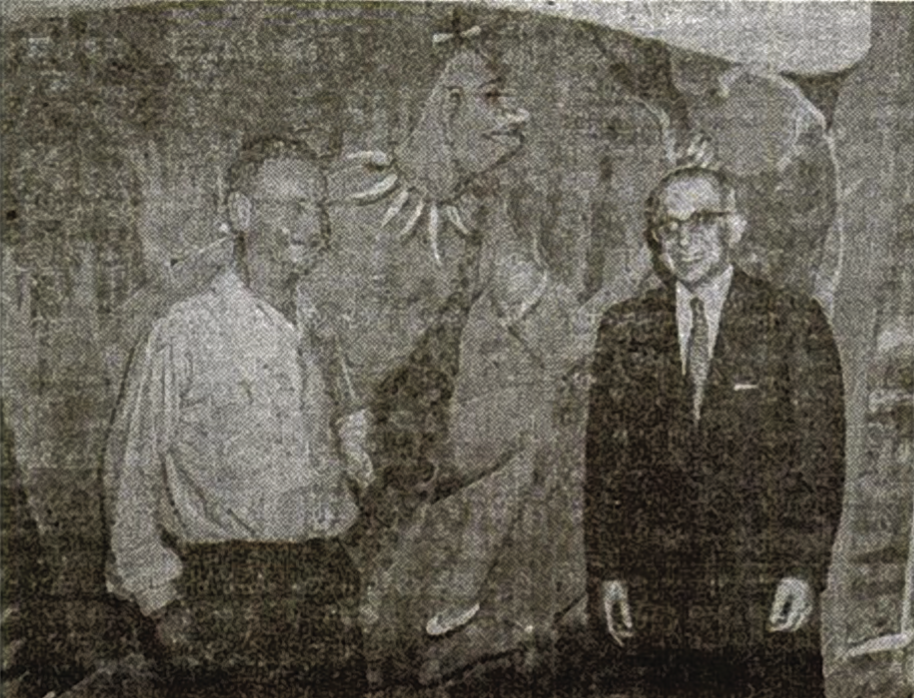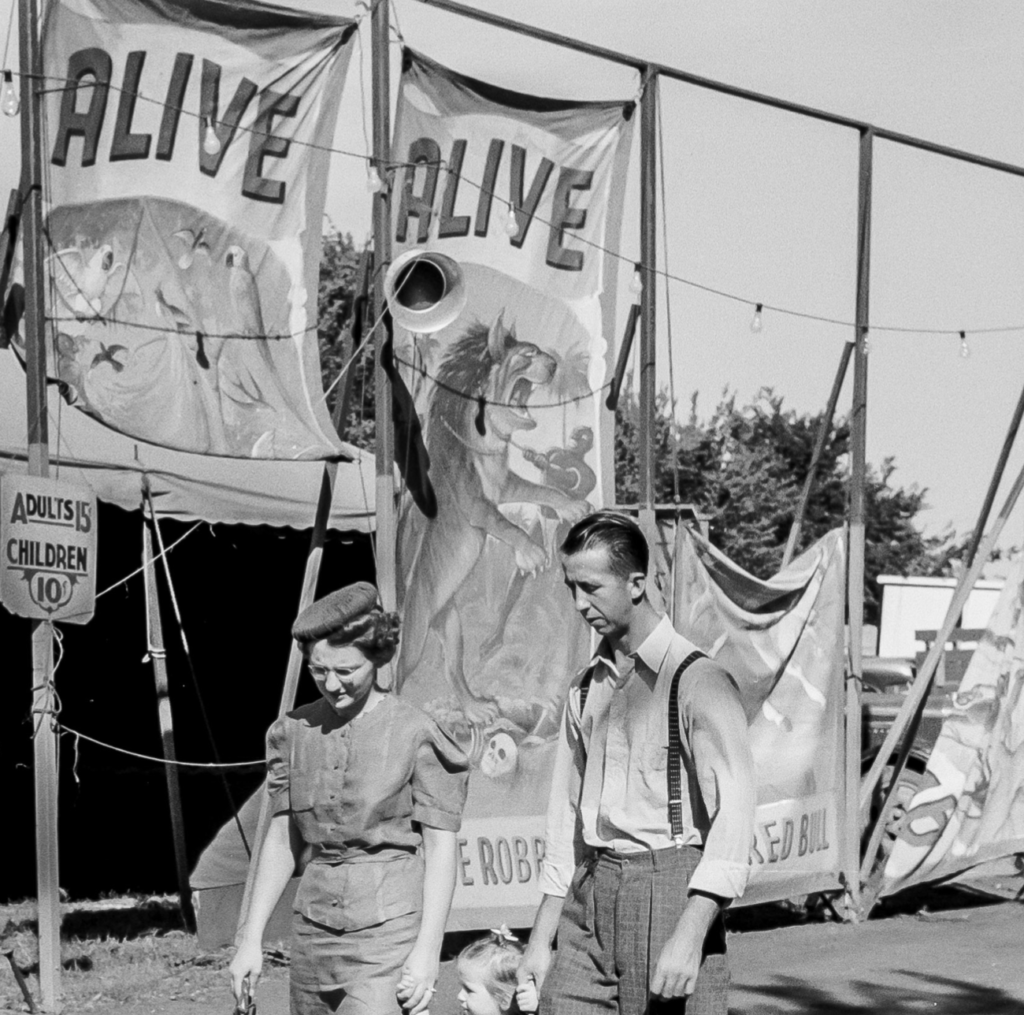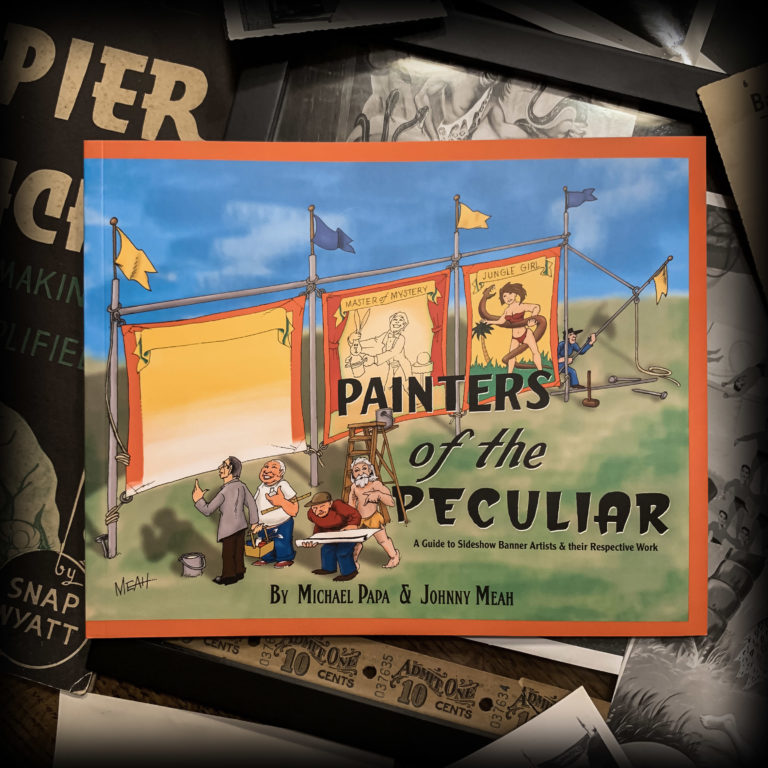Nieman Eisman, Sideshow Banner Painter
As a young boy, Eisman immigrated with his family from Europe. His father, who was a sign painter, started Nieman off with painting, which lead him, in 1910, to work for one of the first banner painters to set up a shop in Chicago: Sigmund Bock. After Bock passed away, Eisman worked for United States Tent & Awning Company in Chicago under Ed Neuman until 1920. It seems when painting oddities and freaks, one cannot steer away from these characters, even being a painter. At the U.S.Tent and Awning Company, Eisman worked with many other artists, such as H.C. Cummins,William T. Lee, James Anderson, and Cad Hill, who had a peg leg.
In 1924, Eisman went to work for Driver Bros’ Tent Company until they went out of business and he opened his own studio in 1931. Sometime in 1954, Eisman sold his company to the O. Henry Tent and Awning Company, which was famous for the banner work of Fred Johnson. After selling his company, Eisman retired.A 1955 Billboard Magazine article tells of how Eisman retired,
“When Eisman retired, he presented Johnson with a rare old book, Brehm’s “Life of Animals.” Spot a cobra or a zebra in a Nieman banner and chances are that one of Brehm’s 1896 drawings posed for it. In one way the book represents Johnson’s royal crown in the banner business. In another, it harks back to the time he and Eisman were co-workers in an earlier banner plant.“
Nieman was an active member of the Showmen’s League of America of Chicago, through which he frequently donated to the Red Cross.
Eisman lived to be 67 and passed away in March of 1956. In the obituary listed in Billboard Magazine, it was stated that Eisman passed away due to a heart ailment upon learning of the death of his brother.They died less than seven hours apart.At the time, he was survived by his widow, Lillian, and two sons, Herbert and Stuart.
In a way, Eisman was a tipping off point, or a transitional artist, from the amazing very old banners; from artists like Sigmund Bock, which are of a completely different influence than the well- known banners created by Fred Johnson and Snap Wyatt. Eisman banners represented a much more organic style in the advertising aspect whereas the newer, more mainstream banners calmed that tone and went straight to the point.This is why Eisman banners look so much older, and because they are…

Eisman famously signed his banners with his first name Nieman, which was unique in and of itself. Having painted for over 45 years, Eisman truly created a legacy with his work. A legacy that still lives on today, whether it be his banners or the banner work that he inspired for decades. Sadly, most Eisman banners are in less than perfect condition with peeling or missing paint, perhaps a reality for all banners at some point in the distant future.

Do you have a Nieman Eisman or Eisman Studios Sideshow Banner for sale? Click here to contact us now, we are interested in buying any and all Snap Wyatt paintings.
For a continued biography and an identification guide on Nieman Eisman, purchase the softcover book, Painters of the Peculiar, here!

